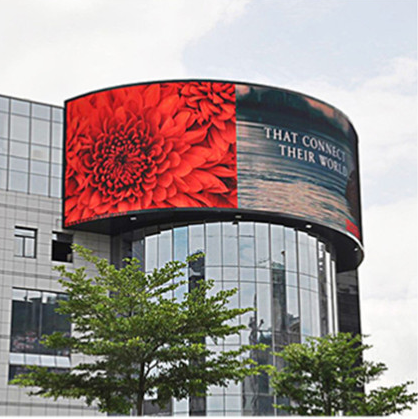
The advantages of using outdoor displays
In an increasingly digital world, capturing attention in public spaces is more challenging than ever. Whether it’s for advertising, information dissemination, or event promotion, outdoor displays have transformed the way businesses and organizations engage with their audience. Unlike static billboards, outdoor digital displays bring content to life with motion, brightness, and real-time updates. As cities grow smarter and public interactions become more dynamic, outdoor LED displays are no longer a luxury—they’re a necessity for those seeking maximum visibility and engagement.
The rise of digital technology means that businesses, governments, and public institutions must adapt to evolving audience expectations. Today’s viewers expect real-time content, visual interaction, and instant messaging. Outdoor displays are ideally suited for delivering this level of engagement. From massive roadside billboards to digital screens at public transit stops, they deliver information and marketing content that’s dynamic, vibrant, and impossible to ignore.
Superior Visibility in All Conditions
One of the most compelling benefits of outdoor displays is their ability to remain visible under any lighting conditions. Traditional print signs quickly lose effectiveness in bright daylight or poor weather. In contrast, outdoor LED displays offer exceptional brightness—often exceeding 6000 nits—and sharp contrast ratios that make content stand out, whether under direct sunlight or in heavy rain.
To adapt to varying environmental conditions, many outdoor LED displays are equipped with automatic brightness sensors that adjust light output based on the surrounding ambient light. This not only enhances visibility but also reduces power consumption. As a result, viewers enjoy a consistent visual experience throughout the day, regardless of the time or weather.
Furthermore, modern displays feature wide viewing angles and anti-glare surfaces, ensuring that content remains legible from multiple perspectives. Whether installed along busy highways or in crowded city centers, these displays provide dependable performance and excellent legibility even from a distance.

Real-Time Content Flexibility
Another major advantage lies in the flexibility to update content instantly. Businesses are no longer restricted to static messages or time-consuming reprints. With just a few clicks, content managers can push updates to one screen or an entire network of displays. This allows organizations to tailor messages for specific audiences, times of day, or events.
Here are just a few ways real-time flexibility adds value:
- Retail: Change promotional content to match flash sales or seasonal offers.
- Transportation: Display live schedule updates or emergency alerts.
- Event Venues: Update signage between shows or performances without delay.
In addition to scheduling and remote management, some systems offer content automation based on triggers like weather conditions, time of day, or even pedestrian movement. This adaptive technology ensures that the display is always showing the most relevant and engaging content, reducing the need for constant manual intervention.
Ultimately, this level of content control translates to reduced operational costs, fewer human errors, and faster response times when immediate updates are necessary.
Enhanced Engagement and Brand Impact
Motion and color naturally attract the human eye far more effectively than static imagery. Outdoor displays harness this visual power by supporting video content, animated transitions, and dynamic visual effects. When used creatively, they not only catch attention but also improve message retention and encourage viewer interaction.
Studies show that audiences are significantly more likely to recall messages delivered through digital motion content than through static signs. This makes outdoor displays a particularly valuable tool for advertisers looking to increase brand recall and emotional resonance.
Additionally, the ability to synchronize content across multiple displays enhances brand consistency. Whether executing a national product launch or promoting a localized campaign, digital outdoor platforms allow marketers to deliver cohesive brand stories at scale.
Interactive features also enhance viewer participation. For example, displays can be integrated with QR codes, social media feeds, or live polling tools. This turns a one-way message into an interactive experience, deepening customer connection and extending engagement beyond the physical display.
Durable Performance in Harsh Environments
Outdoor environments present a unique set of challenges. Displays must operate in extreme heat, freezing cold, heavy rain, and dust storms—all while maintaining consistent performance. Fortunately, modern outdoor LED displays are built with rugged, weather-resistant components designed specifically for these conditions.
Key durability features often include:
- IP65+ waterproof enclosures: Protect against rain and dust intrusion.
- UV-resistant coatings: Prevent screen damage from prolonged sunlight exposure.
- Vandal-proof casings: Provide additional protection in high-traffic areas.
These components ensure that the display remains operational and visually effective over long periods. In climates where environmental challenges are constant, this resilience is not just a convenience—it’s a necessity.
Moreover, advanced models now include real-time diagnostics and system monitoring. These features detect internal component issues—such as voltage spikes, abnormal temperatures, or fan failure—before they cause screen malfunctions. As a result, maintenance becomes more predictive and less reactive, reducing both downtime and repair costs.
Cost-Effectiveness Over Time
While the upfront cost of an outdoor LED display system may appear high, the long-term financial benefits make it a sound investment. Traditional static signs require recurring costs for printing, replacement, and manual installation, whereas digital displays reduce or eliminate these costs.